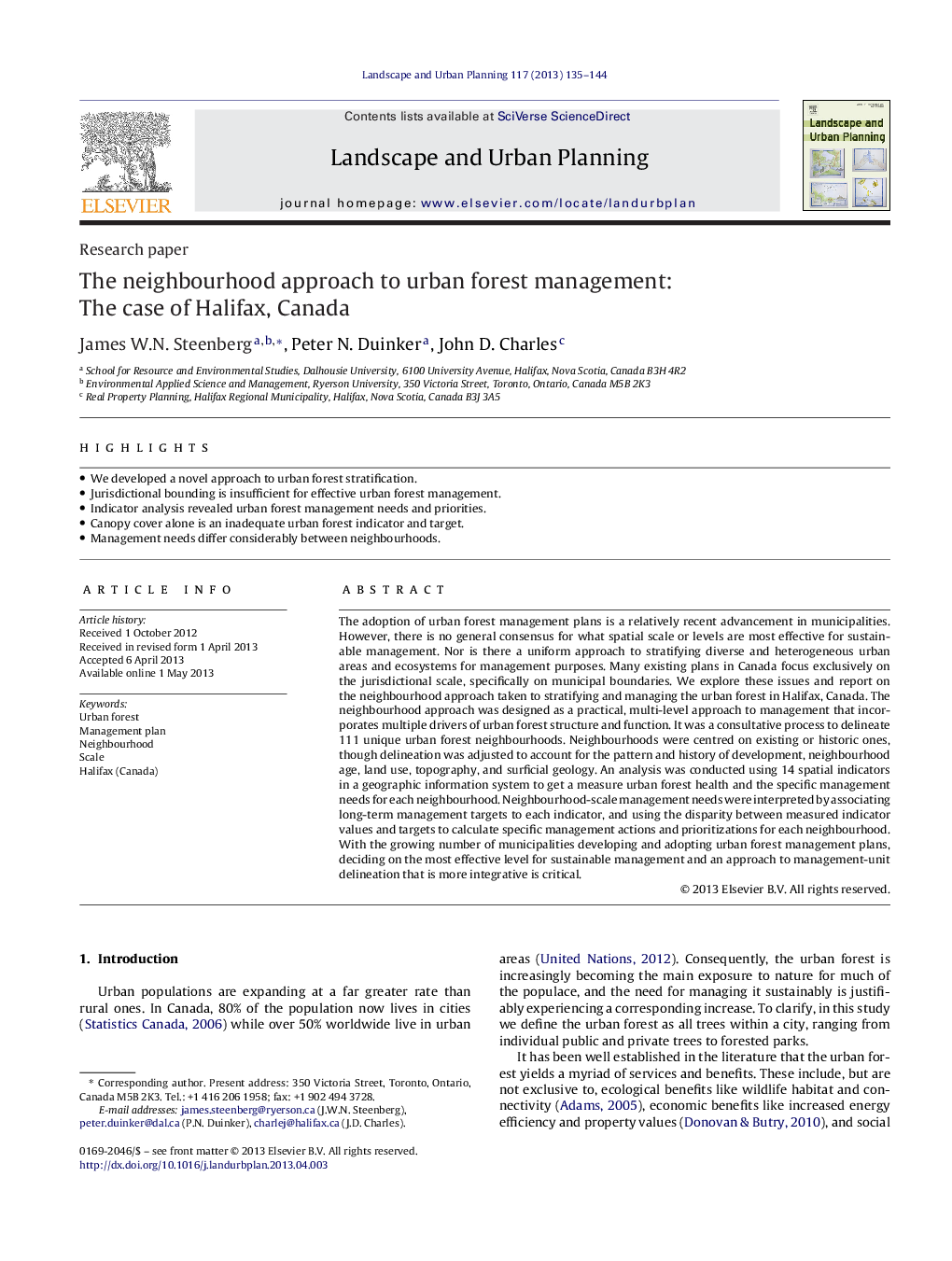| کد مقاله | کد نشریه | سال انتشار | مقاله انگلیسی | نسخه تمام متن |
|---|---|---|---|---|
| 1049353 | 1484641 | 2013 | 10 صفحه PDF | دانلود رایگان |

• We developed a novel approach to urban forest stratification.
• Jurisdictional bounding is insufficient for effective urban forest management.
• Indicator analysis revealed urban forest management needs and priorities.
• Canopy cover alone is an inadequate urban forest indicator and target.
• Management needs differ considerably between neighbourhoods.
The adoption of urban forest management plans is a relatively recent advancement in municipalities. However, there is no general consensus for what spatial scale or levels are most effective for sustainable management. Nor is there a uniform approach to stratifying diverse and heterogeneous urban areas and ecosystems for management purposes. Many existing plans in Canada focus exclusively on the jurisdictional scale, specifically on municipal boundaries. We explore these issues and report on the neighbourhood approach taken to stratifying and managing the urban forest in Halifax, Canada. The neighbourhood approach was designed as a practical, multi-level approach to management that incorporates multiple drivers of urban forest structure and function. It was a consultative process to delineate 111 unique urban forest neighbourhoods. Neighbourhoods were centred on existing or historic ones, though delineation was adjusted to account for the pattern and history of development, neighbourhood age, land use, topography, and surficial geology. An analysis was conducted using 14 spatial indicators in a geographic information system to get a measure urban forest health and the specific management needs for each neighbourhood. Neighbourhood-scale management needs were interpreted by associating long-term management targets to each indicator, and using the disparity between measured indicator values and targets to calculate specific management actions and prioritizations for each neighbourhood. With the growing number of municipalities developing and adopting urban forest management plans, deciding on the most effective level for sustainable management and an approach to management-unit delineation that is more integrative is critical.
Journal: Landscape and Urban Planning - Volume 117, September 2013, Pages 135–144